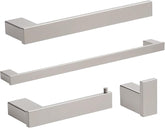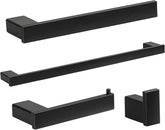How to Fix Leaking Pipes? Practical DIY Tips for American Homeowners
A leaking pipe can cause mold, water stains, and high bills—but most common leaks are easy for American homeowners to fix themselves. Below’s a simplified guide to identifying issues, quick fixes, and when to call a pro.
Step 1: Prep First (2 Key Steps)
- Shut off water: Turn off the fixture’s shutoff valve (under sinks/toilets) or main water if no fixture valve exists.
- Grab tools: You’ll need an adjustable wrench, Teflon tape, pipe repair clamp, epoxy putty, rags, and a bucket.
3 Common Leaks & DIY Fixes
1. Leaking Joints (Most Frequent)
- Why it happens: Loose nuts or worn rubber washers.
-
Fix:
- Wipe the joint dry, then gently tighten the nut with a wrench (don’t over-tighten—you’ll crack it).
- If leaks persist: Unscrew the nut, replace the worn washer, wrap threads with 2–3 turns of Teflon tape, then reattach.
2. Small Cracks (PEX/Copper Pipes)
- Fix for PEX: Wrap the crack with epoxy putty (e.g., J-B Weld PipeWeld) and let cure 30 mins.
- Fix for Copper: Use a rubber-lined repair clamp—position over the crack, tighten gently with a wrench.
3. Fixture Connections (Faucet/Toilet Lines)
- Why it happens: Worn O-rings or dirty threads.
-
Fix:
- Disconnect the supply line with a wrench.
- Replace the O-ring, clean threads, wrap with Teflon tape (3–4 turns), then reattach.
When to Call a Plumber
Skip DIY if:
- The leak is in hidden pipes (walls/floors) with no clear source.
- Pipes are fully broken (risk of flooding).
- You’re dealing with old galvanized steel pipes (need replacement).
- DIY fixes don’t stop the leak.
Quick Prevention Tip
Insulate pipes in cold areas (basements/garages) with foam sleeves to avoid freezing cracks—check under sinks monthly for small drips.





